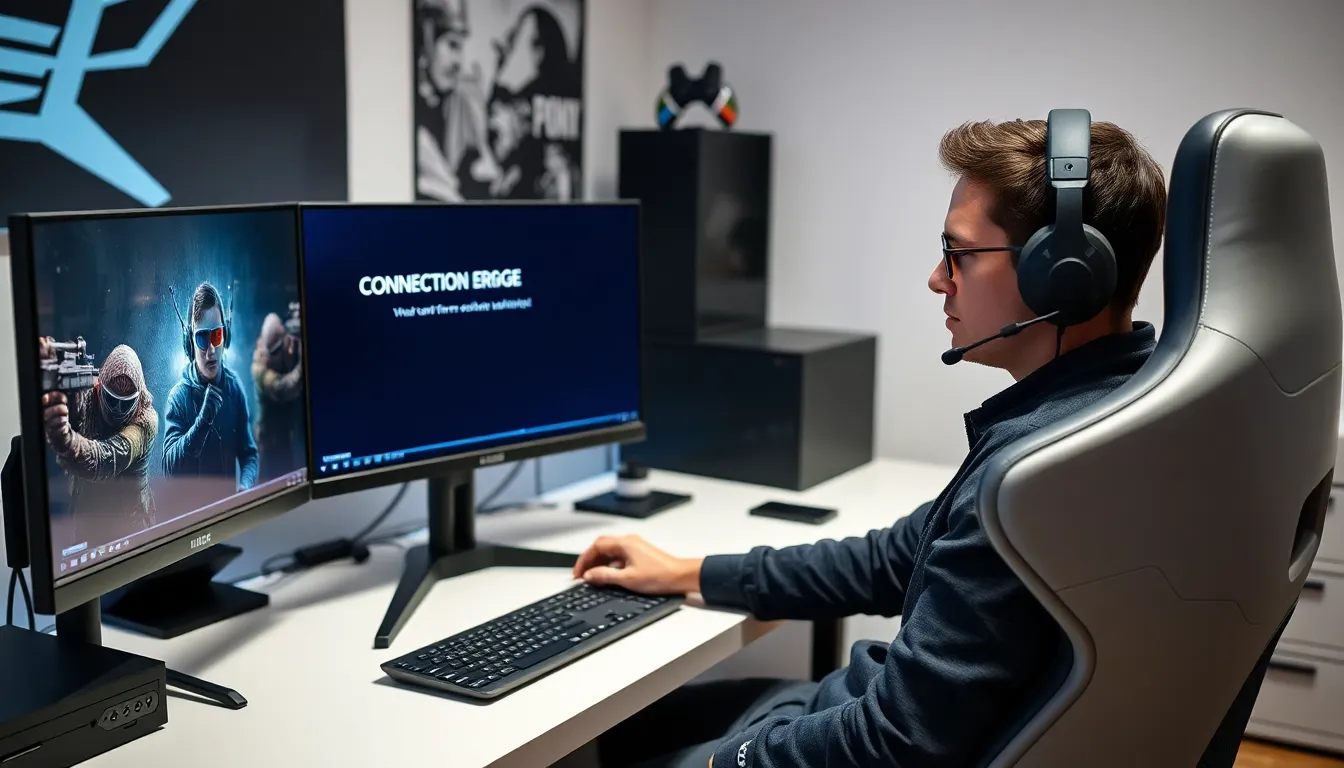Picture this: you’re locked in a heated match of Rainbow Six Siege, adrenaline pumping, only for that dreaded server connection error to ruin your day. It’s like being served a delicious slice of cake, only to find it’s made of cardboard. Fret not, friends. This guide will unveil the mysteries behind those frustrating connection errors and, hopefully, sprinkle some magic dust on your gaming experience. Let’s immerse so you can get back to outsmarting your opponents instead of wrestling with your wifi.
Table of Contents
ToggleUnderstanding Server Connection Errors

Server connection errors in Rainbow Six Siege are the digital equivalent of hitting a brick wall mid-sprint. You’re ready to engage but, alas, the game keeps you at bay. Often, this error manifests when the game struggles to establish a link between your device and the game servers.
To understand these errors, it’s essential to know that the game relies on a library of online resources to operate smoothly. This means your connection stability, speed, and the health of the game’s servers all play pivotal roles. If even one of these factors hiccups, you could find yourself staring at the dreaded connection error, talk about a buzzkill.
Typically, these errors have common codes attached, each indicating a specific issue. Some players may see error codes like “0x00000000” or “3-0x0001000B.” These codes indicate things like timeouts, server downtimes, or even issues with the player’s internet provider. Understanding these codes can help in troubleshooting your connection problems and getting back online.
Common Causes of Connection Errors
Several culprits can lead to server connection errors, and identifying them is often the first step in solving the problem. Here are some common causes:
- Internet Service Provider Issues: Sometimes, the problem isn’t you. Your Internet Service Provider (ISP) could be having outages or slowdowns.
- Network Congestion: Everyone and their dog streams Netflix, gamed, or browses the internet nowadays. High usage in your location might slow down your internet speed.
- Software Conflicts: Antivirus or firewall settings can inadvertently block the game from connecting to its servers.
- Game Server Status: At times, Ubisoft’s servers may be down for maintenance or experiencing outages. Always check their official server status page.
- Router Problems: Sometimes, just like an overcooked pasta, routers can get stuck. Power cycling your router can resolve temporary glitches.
Troubleshooting Steps for Connection Issues
If you’re facing a connection error in Rainbow Six Siege, try these effective troubleshooting steps:
- Restart the Game: It’s simple but effective. Quit the game completely and turn it back on.
- Check Server Status: Before you blame yourself, check to see if the problem is on Ubisoft’s end by visiting their official page.
- Reconnect to the Internet: Disconnect and reconnect your device to your network. This can refresh your connection.
- Restart Your Router: If everything else fails, restart your router. Sometimes a good old reboot clears the cobwebs away.
- Disable Firewalls Temporarily: If you suspect your firewall is too eager, try disabling it temporarily to see if that resolves the issue.
Adjusting Network Settings for Better Connectivity
Tweaking your network settings can work wonders in enhancing your gaming experience:
- Change DNS Settings: Switching to a faster DNS provider, like Google’s (8.8.8.8 and 8.8.4.4), can often improve connection speeds and reliability.
- Use a Wired Connection: Whenever possible, Ethernet connections can provide a more stable and faster connection than Wi-Fi. Consider giving your router a close friend in the form of a cable.
- Enable Quality of Service (QoS): Access your router settings and enable QoS to prioritize gaming traffic. This can decrease latency and improve performance during heavy downtime.
Using VPNs to Bypass Connectivity Issues
VPNs have become a popular tool for those wanting to enhance their online privacy, but they can also help bypass certain connectivity issues.
Using a VPN can sometimes improve your ping by routing your connection through a server that succumbs to less congestion. Oftentimes, players connect to a closer location from a server that’s less bogged down, leading to a smoother experience.
But, using a VPN can also introduce some latency if it’s not configured properly or if the server is overloaded. So, tread carefully. It’s a balancing dance of ensuring privacy while maximizing gaming performance.
When to Contact Support
If you’ve tried everything and still can’t shake off the connection errors, it might be time to reach out to Ubisoft support.
Inform them of your issue and let them know all the troubleshooting steps you’ve completed. This can help them pinpoint the issue faster. Sometimes, there might be an ongoing problem they’re already aware of, and they can offer insights or timelines when the service will be restored.
Plus, no one enjoys being stuck on the sidelines when they could be dropping baddies in a tactical siege.





